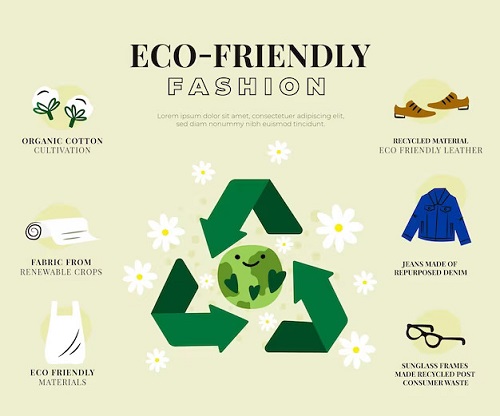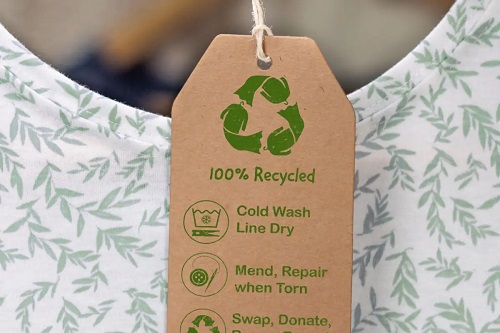There are a rising number of brands that are focusing to make fashion more sustainable and environmentally friendly. As part of the sustainability, in the fashion industry when we talk about disruption, we have talked with some of the retail professionals about their sustainability brands.
Sustainability in the fashion industry is an approach towards sourcing, manufacturing, and designing clothes that minimizes the impact on society. Sustainability focuses on maintaining a balance by ignoring the depletion of natural resources.
Whereas, fast fashion is a fashion that is trendy, cheap, and manufactured in high quality. Fast fashion is as harmful as it is produced on an endless cycle of overconsumption or overproduction.
Here, in this article, we are going to discuss how sustainable brands are disrupting the fast fashion industry and the pros and cons of fast fashion.
Let’s dive into the deep!
How sustainable brands are disrupting the fast fashion industry:
Changing Consumer Habits and the Focus on Responsible Shopping
Consumers habits are changing and they are focusing on more responsible shopping. The fashion industry is evolving constantly. New trends coming in each year, but one recent focus is on the sustainability of the fashion industry.
There is a requirement for a way that can work up on the fashion industry currently operates. Sustainable fashion focuses on the long-term view, and its approaches to design, manufacturing, and the adoption of clothing.
Sustainable brands are focused on fashion that creates well and avoid harm. That means sustainable brands focus on creating and maintaining relationships with people, animals, and the planet. Ethical fashion is a term that is often used in place of sustainable fashion.

Sustainable Fashion and its Long-Term Approach
The fast fashion industries offer clothes at cheap prices; this is possible because the clothes are manufactured in huge quantities. Therefore, the industries only make a little portion of profit by selling the clothes. However, as they produced a huge number of garments the profit increased drastically within a short period.
The rise of fast fashion has caused a race to the bottom for each fashion brand to compete with each other for offering the lowest price possible. This is including the cost to manufacturers, animals, humans, and the environment. Whereas sustainable fashion brands focus on producing the morally right treatment of both animals and humans that get affected in some way by the fashion industry.
Fast fashion brands can negotiate low prices with the manufacturing units that work for them because they only require huge quantities of products. Unfortunately, this negotiation suppresses the wages and often maintains a below-the-standard of safety.
The Rise of Fast Fashion and its Negative Impacts
The impacts on the planet are devastating and the impacts that causes by the fashion industry on the planet also effects the people who live on it. However, all people do not get affected equally. But the communities that reside in the South of the globe are disproportionately impacted by the pollution and climate crisis.
But, these people who are affected by the fashion industry negatively, perhaps do not consume fast fashion and are often the manufacturer of the fashion. It is proven that fast fashion is in desperate need of change and sustainable fashion must take over the entire industry and positively influence the people who are involved and the planet of course.
Minimizing Carbon Footprint:
Sustainable fashion also minimizes the carbon footprint. The fashion brands that are focusing on sustainable fashion prioritize the health of the planet in several ways. One of the key opportunities is focusing on the entire life cycle of the clothing. It involves the sustainable production of the clothes and ends with a closed-loop waste reduction at the end of the clothes’ life.
This is the key importance of the circular economy to sustainable fashion brands. Moreover, sustainable brands use biodegradable components from natural or recycled fibres. These materials grow with no pesticides, or no chemical use, and consume less energy, and water. Also, the designers are targeting to bring more sustainable products to their consumers.

Examples of Sustainable Fashion:
For example, Levi’s famous jeans use 96% less water than normal denim finishing. This leads to saving more than 1.8 billion litres of water that have been recycled.
Other brands such as Belstaff have started using faux fur while others are focusing on using sourced wool, cotton, recycled textiles, and leather alternatives. However, some of these materials can be more expensive but still brands are open to showing their passion and care for the environment.
Pros and cons of fast fashion:
The pros of fast fashion:
- Quick production: Quick production refers to the fact that fast fashion clothes are usually manufactured within a few months. Because of this, the garments are made quickly, these items can be delivered to the market with less or no delay.
- Variety: another reason for the popularity of fast fashion as it comes with a lot of variety. This refers to that you can have a variety of choices when it comes to each season’s collection.
- Accessibility: with fast fashion, you can look for some trendy items that are produced in just a few months. This means that anybody can shop for new garments regardless of their income.
- Cost efficiency: With fast fashion, you will have a lot of collections of trendy garments within your budget. This means that you will not require to spend a lot of money, so it makes you able to purchase more items with your money.
The Cons of Fast Fashion
- Poor quality: One of the downsides of fast fashion is that it is not produced for the long term. So, it means that you may find some high-quality items of slow fashion instead of fast fashion items.
- Unsustainable and Unethical: the most important downside of fast fashion brands is that they may damage the planet, animals, and humans. As these products have not been made for the long term, the low-profit margins companies want to take advantage of cheap workers and materials that will not run for the long term.
- Uniqueness: another downside of fast fashion is that it is not as unique as other options such as upcycling and thrift shopping. This is the reason why fast fashion pieces can be shown in different stores all over the globe.
FAQ:
What is the future of sustainability in fashion?
Ans: the future of sustainable fashion is positive and bright. Nowadays, consumers are becoming more concerned about the impacts of the fashion industry on the environment, and planet; sustainable fashion is becoming more mainstream. Many fashion brands are realizing the need for sustainability and also taking necessary steps in their production methods and materials.
What is the impact of sustainability in the fashion industry?
Ans: Sustainable fashion is using biodegradable components such as natural or recycled fibres. These materials grow with no pesticide use and also consume less water and energy. Thus sustainable fashion reduces the overall carbon footprint of these brands.
What is the future of the fast fashion industry?
Ans: The global fast fashion market is expected to grow by $184.96 billion in 2027. As the young generation intended to purchase affordable garments driving the fast fashion industries.
Conclusion:
The concern for the planet, animals, and humans among the fashion brands leads the sustainability fashion towards future fashion. You must understand the harmful effects of fast fashion brands because these brands come with wasteful and unethical fast fashion items.
Hopefully, this article has given you the right information about the future of fashion that provides you with some inspiration for making your brand more environmentally responsible.
